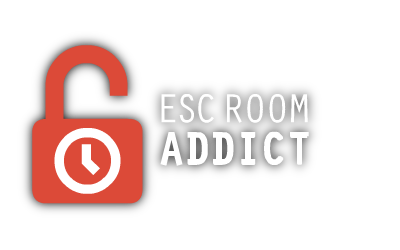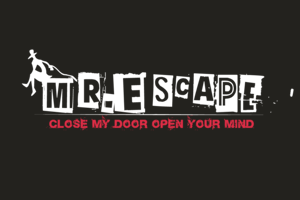Escape The Ripper
Escape The Ripper
- Played October 2020
- 1-4 players
- $40
- Good for families
- What People Say
NOTE: This review will be a bit different as Escape The Ripper contains two separate games inside (White Chapel + The Residence). One game (The Residence) is designed for those unfamiliar with escape rooms and in-home escape games. The other game (White Chapel) is designed for those who prefer a slightly longer and more involved game. Both games can be played and are different, but they share some common game pieces and have the same conclusion, leading to the next Escape The Crate box in the series. For the purposes of keeping things simple, we’ve harmonized the scores and comments about both games together. We’ve included specific comments to indicate when there’s a noticeable difference between the two games and how that may impact your game playing experience.
Although we were a little late to the series, our friends at Escape The Crate sent us their latest offering: Escape The Ripper. For those unfamiliar with these type of games, you first purchase a subscription plan which allows you to receive a new Escape The Crate game each month. Each game box has its own title, theme, puzzles, props, and story, but is connected to an ongoing story throughout the whole series. These type of games have become very popular in 2020, but Escape The Crate was among the earlier entries into the marketplace. Did their experience help them impress our ERA members? Or has the in-home escape game industry already advanced too rapidly for older game designs to keep up? Let’s dive in and find out…
The game component quality caused an interesting debate amongst our team. On the one hand some of our ERA members liked the tactile game props, the beautiful design of the game box itself, and most impressive of all, the inclusion of assistance features like the ability to read most of the game in text (for the hearing impaired) or the ability to turn on a narrator (for the visually impaired). This last feature in and by itself deserves VERY high praise in our opinion! Not only is it unique, but it shows the mindset of the game creators and their commitment to making sure everyone has the ability to play this game (this was already alluded to in our editor’s note that two games were included in this box to allow people with different levels of experience to play).
…At the same time, there were a few noticeable shortfalls in design: several of the game pieces were thin paper cut-outs (not really compatible to playing outdoors or anywhere with a slight breeze), the accompanying game videos were fairly low quality, there were a lot of double-sided printed papers (this wouldn’t have been too much of an issue if it didn’t involve having to search through so many sheets for one side or the other, and in some cases seeing one side of a page that wasn’t supposed to be seen until later), the audio balance of the videos was sometimes off making it hard to hear the story vs. the much louder music and sound effects, and as much as we loved the narrator function, the voice acting style was narrated similarly to how a librarian reads a children’s book (nothing wrong with children’s books), closer than it was to a story based on Jack The Ripper. When all our observations and scores were brought together it was a bit below the norm, but still managed to impress us in a few ways, so it’s looking good so far.
For the most part, the immersive features within Escape The Ripper were equally present in both games (White Chapel and The Residence). There was one noticeable difference several of our members picked up on however… there seemed to be a higher quality of videos in The Residence, compared to White Chapel. We’re not entirely sure why that was but we wanted to mention it in advance so that we can discuss the other shared immersive pros and cons. Starting with the story which was integrated fairly well into the game, there was a good amount of curiosity created throughout both games, and their stories had small touches of in-game development. We also enjoyed some of the tactile props used within the game, and how they brought the visualization to life. They were fun to interact with while purposely staying away from being too realistic so that each game could be considered family friendly. The box was marvelously designed to be a backdrop set (very clever) which also helped with the visualization of the time period and location. At the same time, we would’ve liked to have seen a few other areas brushed up on… The story was decent in and by itself, but it could’ve used a lot more in-game development to reach its full potential. Why is this mission important to us? Why should we get it done as quickly as possible? What do we still need to learn that we don’t know yet (what’s the mystery?) And most of all, how does this connect to the bigger picture of the whole game series? Although there are blocks of text that partially answer these questions before and after the game, it’s when this type of information is integrated INTO the game we can say there’s an immersive ‘hook’. Long ago when Escape Room Addict was the only North American reviewing and consulting organization, we started talking about and educating people on the importance of ‘immersive hooks’. An ‘immersive hook’ is the creation of ‘who’, ‘what’, ‘when’, ‘why’, and ‘how’ questions at the beginning of a game, leaving subtle information throughout the game, and ultimately letting players piece all that information together towards the end of the game. A metaphorical police white-board with characters, facts, locations, and anything else that can be linked together for that big ‘’Aha!” moment! This tends to be one of the biggest differences between escape games (and in-home escape games) that are highly immersive from those which aren’t as strong. Quickly revisiting our earlier comments about the odd choice in narration style, alongside the lower quality videos (in White Chapel), and you can see why our team didn’t feel as emotionally connected to the story. In fairness it’s not easy to make a light-hearted, family friendly game about Jack The Ripper (*laughs*) so something had to give, and in this case, the immersion was the victim of it being a good family friendly game. Moving forward we hope the Escape The Crate team keeps their strong visual designs and adds some immersive audio like time-period music and/or sound effects. Again, it’s the little things that happen in the background most people don’t realize is affecting their enjoyment level of a game. So are we saying the game has bad immersion? No, it’s clear there are some good immersive elements here… but with the potential for so much more! Without an immersive hook, along with some odd choices in audio and video, the games are fairly average in immersion.
And the puzzles, how did they fit into the mix? Our team was a bit more mixed in opinion on this. The designers did a good job of including a letter to the players letting them know each of the two games were designed to be slightly different. This is most evident in their length (White Chapel is longer and more complex), and in their puzzles (The Residence has less puzzles which are more straightforward). Although we could see how personal preference determined which set of game puzzles each individual ERA member preferred, it seems we all agreed that as a ‘beginner’s game’, the puzzles within The Residence were great! Both games had personal favourite puzzles by our members, but overall each game’s puzzles seemed to have the same pros and cons. White Chapel is a traditional linear puzzle path with some puzzles that both frustrated and made us happy. There was one video based puzzle in particular that didn’t go over so well with the team because it left open a lot of interpretation about what was being shown on the screen so we couldn’t solve it without going to the provided answers. At the same time, there was one deductive-logic puzzle that everyone loved because it was a cleverly integrated into the story forcing us to recall certain information. The Residence on the other hand was more of a non-traditional open puzzle path and much easier to approach for a group of people who could each work on a puzzle of their own. The puzzles were easy (too easy for some of our members) but did a very good job of being a game that is appropriate for younger audiences and those who’ve never played an escape room or in-home escape game before. There wasn’t much of a ‘wow’ factor with any of the puzzles, but at the same time there wasn’t anything really ‘wrong’ with them either (aside from the one video puzzle)… Again it seemed to come down to personal preference in puzzle style and complexity as to how much (or little) each ERA member enjoyed them. It’s safe to call the whole box a good, average, set of puzzles that will depend on who’s playing the game.
And the most important question of all – did the team have fun? Yes… mostly. As we just mentioned there were some clear preferences in which of the two games was more enjoyable, but we won’t quibble about that right now. What we CAN say is that Escape The Ripper holds one unique distinction they should hold in high regard… If there was just one game we had to pick to introduce people to the world of in-home escape games (and/or escape rooms) it would be The Residence within this box! It really is the BEST intro-beginner game we’ve ever played! It’s well explained, walks you through the motions of what an in-home escape game is like, the puzzles aren’t too complex, they allow multiple people to get involved at once, and it’s easily finished in about an hour or less! We were VERY impressed with this game and we plan to use it to introduce any new in-home escape game players in the future! Having said that, some choices in component quality and audio/visual could be improved. Would we steer people towards the game box overall? Absolutely! If you’re wanting to join the ongoing Escape The Crate series, we think there’s enough potential in Escape The Ripper to indicate a lot of good things to come. Our hope for the Escape The Crate team moving forward is that they’ll place even greater attention to detail in their next game, while building on their strengths of being inclusive, visually appealing, and creating a ‘bigger story’ that keeps subscribers looking forward to their next game box… like we are!
We want to hear your thoughts on this game! Be sure to comment in the section below or send us a message via ERA’s email, Facebook, Instagram, YouTube, or Twitter… As always, happy escaping!
Final Verdict: | 6/10 |





